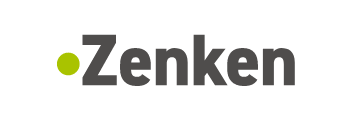Basics of the Japanese Language
Alphabet and Script
Written Japanese consist of two major building blocks: Two syllabic alphabets (hiragana/katakana) and Chinese characters (kanji).
Hiragana and Katakana
The Japanese language has two alphabets consisting of 46 letters each, with each letter representing a syllable. The hiragana alphabet is used for Japanese words and grammatical functions while the katakana alphabet is used for foreign words and for emphasis (similar to bold text in other alphabets). The singular letters are called kana.
Aside from a single exception (the letter “n”), the Japanese alphabet contains no independent consonants. Instead, consonants are always paired with a vowel (ka, na, ma, etc.)
Both hiragana and katakana are structured in rows. They start with the “a-row” (a-i-u-e-o), continue with the “ka-row” (ka-ki-ku-ke-ko) and so on until reaching the last letter (n).
When imposed over kanji, kana are called furigana or ruby/rubi. Most textbooks aimed as foreigners as well as regular publications aimed at Japanese consumers (manga, novels, etc.) contain at least some amount of furigana.
The kana alphabets may look imposing at first, but most learners can memorize them within a few days to a week. Out of the two alphabets, foreigners tend to struggle with memorizing katakana more. Katakana are used less often, and their simple geometric shapes makes many of them look alike.
Chinese Characters (Kanji)
Ancient Japanese had no writing system on its own. Over the course of history, Chinese characters (called kanji in Japanese) slowly trickled into Japan as a cultural import from the Asian mainland. First only used by the nobility, they eventually became widespread among the general population.
Around the late 19th century, there were some attempts to abolish kanji and switch to a writing system that only used kana – but all of them failed. To the chagrin of many foreign students of the language, kanji continue to be an essential part of modern Japanese.
(By the way: The letters of the kana alphabet are based on simplified/abstracted versions of certain kanji!)
In total, there are tens of thousands of kanji. However, only a fraction of them are used in daily life. The minimum number of kanji required for basic literacy is around 2,100. These characters, called joyo kanji, are expected to be known by everyone who has completed compulsory education (elementary school and junior high school) in Japan.
For foreign language learners, the joyo kanji are a good baseline to gauge learning progress. However, a more realistic estimate for the number of kanji required to communicate fluently in business situations is around 3,000.
As computers have become widespread and most people are using keyboards for written communication, being able to write kanji by hand is not as important as it used to be. However, since virtually all Japanese documents at work contain kanji, being able to read them is still a crucial skill for everyone looking to work in Japan long-term.
Grammar
Japanese nouns, verbs, and other words are held together by so-called grammatical particles. Particles are mostly singly hiragana that define the relationship between two parts of a sentence to each other. They are placed after the word they are referring to.
For example, を (wo) is the object particle, and は (ha/wa) and が (ga) are subject particles. A very basic Japanese sentence containing only subject, object and verb looks like this:
猫はネズミを食べる。
The cat eats the mouse.
Japanese follows a SOV (Subject-Object-Verb) sentence structure. Translated literally, the sentence above would came out as “the cat mouse eats.”
Quirks like this can make Japanese grammar confusing at times, but overall, grammar one of the easier aspects of the language. A lot of the grammatical complexities present in other languages are absent in Japanese. For instance, there are no grammatical cases or genders, and the use of personal pronouns is very limited.
Pronunciation
Compared to languages like Chinese, French, or English, Japanese pronunciation is very straightforward. The total number of sounds is relatively low, and words are usually pronounced as they are written. Once you memorize the pronunciation of the basic building blocks (the kana syllables) and a few exceptions, you will seldomly run into things that trip you up.
Like Chinese or Vietnamese, Japanese also uses pitch accent. A well-known example are the words 雨 (rain) and 飴 (sweets). Both are pronounced あめ (ame), but the word for “rain” starts with a high “a” and descends into a low “me”. For the word for “sweets,” it’s the exact opposite – low “a” followed by a high “me.”
Studying pitch accent will make your spoken Japanese clearer and easier to understand for native speakers. However, this aspect is not as essential as it is in other languages. In most cases, the meaning of your sentences will be self-evident through grammatical structure and context. Many foreigners in Japan manage to be understood and get through everyday live despite never having studied pitch accent.
Polite and Formal Language (Keigo)
Broadly speaking, Japanese knows three different speech registers:
- Informal (ため口 tame-guchi or ため語 tame-go)
- Polite (丁寧語, teineigo)
- Formal (敬語, keigo)
Informal speech is used between people of similar age or status (ex. friends, family, colleagues of the same rank), or by people of higher social ranks when talking to people of lower rank (ex. a manager talking to a regular employee).
Polite speech is the most general speech register, serving as a common “middle ground” when talking to people the speaker is not particularly close too. This type of speech is typically taught first in Japanese language education aimed at foreigners and covers all common everyday life situations (going shopping, talking to strangers, etc.)
Formal speech is used in business communication and other situations that require showing a high degree of respect. It can be divided into two sub-units, humble speech (謙譲語, kenjogo) and honorific speech (尊敬語, sonkeigo). Humble speech expressions are used when the speaker is referring to themselves or people in their group. Humble speech expressions, on the other hand, are used when addressing the conversation partner or others in their vicinity.
Formal speech involves switching out a number of expressions used in polite speech with formal equivalents, such as 見る (miru, “to see/look at”) becoming ご覧になる (go-ran ni naru, “to see/look at”) in honorific speech. However, it is not completely separate from polite speech. Rather, polite speech and formal speech are combined with one another.
Learning all the ins and outs of formal speech requires some time. Foreigners that are still learning the language are generally allowed some slip-ups even in business situations. Nearly flawless formal Japanese only becomes a major requirement in customer- and client-facing roles like sales or customer service.
Japanese Language Tests and Exams
Japanese Language Proficiency Test
The Japanese Language Proficiency Test (JLPT) is the most common Japanese language test. The JLPT is available in most countries around the globe. Tests are held two times each year, in July and December. Fees vary depending on the country the test is taken in. In Japan, the test costs around 6,500 JPY (~60 USD).
The JLPT is separated into five levels, with N5 being the easiest and N1 the most difficult. The exam tests language knowledge (vocabulary and grammar) and listening ability). There are no speaking and writing sections. Tests of all levels roughly take about 2 hours.
| Level | Language proficiency | Language knowledge and abilities |
| N5 | Beginner |
|
| N4 | Advanced Beginner |
|
| N3 | Intermediate |
|
| N2 | Upper Intermediate |
|
| N1 | Advanced |
|
You can have a look at sample questions for each level on the test’s official website.
Companies that mainly use Japanese for everyday communication typically ask for Japanese skills equivalent to JLPT N2 or N1. For highly specialized positions (most prominently coding, software development and other work that involves programming), employers are also sometimes accepting candidates with lower Japanese ability.
While having a test certificate is often not technically required, being able to present one increases your chances of advancing in the selection process.
Business Japanese Proficiency Test
The Business Japanese Proficiency Test (or BJT for short) is a lesser-known test that checks knowledge of formal Japanese. The BJT is a computer-based test and can be taken in test centers in select cities both inside and outside of Japan. Compared to the JLPT, the number of countries where the test is available outside of Japan is relatively limited
Unlike the JLPT, test-takers don’t apply to take tests for different levels. Instead, everyone takes the same test, and the result is a score reflecting their current level of business Japanese proficiency.
The test takes 135 minutes and covers listening and reading. Just like the JLPT, there are no speaking or writing sections. In Japan, the test costs 7,000 JPY (~65 USD).
Due to the relatively high level of Japanese, taking the test is not recommended for learners below JLPT N2 level.
JFT-Basic Japan Foundation Test for Basic Japanese
The JFT-Basic is the newest Japanese test on this list. It was introduced in connection with the new Specified Skilled Worker visa. In terms of language level, the JFT-Basic is equivalent to the JLPT N4. It tests whether learners of Japanese can understand basic, clear instructions for everyday work.
The test takes 60 minutes and consists of four sections: Script and vocabulary, conversation and expression, listening comprehension, and reading comprehension.
As the test is intended to be taken by applicants in preparation for the Specified Skilled Worker visa application, it is currently only available in a select few Asian countries:
- Indonesia
- Nepal
- Cambodia
- Mongolia
- Philippines
- Vietnam
- Myanmar




